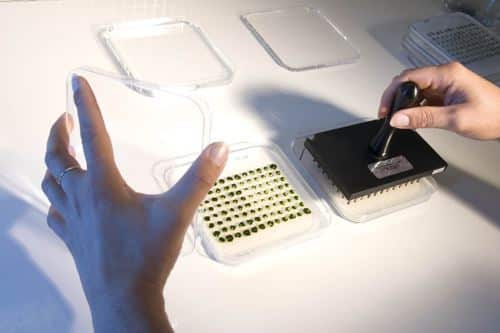PRESS RELEASE
In aquatic environments, CO2 diffuses only very slowly and algae have developed a mechanism allowing to increase the intracellular CO2 concentration at the level of the CO2 fixing enzyme Rubisco. Once concentrated, CO2 can be efficiently “fixed” by Rubisco, through biochemical reactions that convert the “inorganic” carbon of atmospheric CO2 into “organic” carbon, in the form of “sugars”.
While the energy source of CO2 fixation was known, namely the solar photons captured by photosynthesis, it remained to elucidate the processes providing the energy necessary for the CO2 concentration mechanism, also called CCM. However, the accumulation of CO2 can only occur if the CO2 is in its ionic (and hydrated) form, the bicarbonate. It has then to be reconverted into CO2 prior to its fixation by the Rubisco.

Researchers at BIAM (CEA, CNRS, AMU) have identified the processes of production of photosynthetic energy necessary for this conversion, using the green alga Chlamydomonas as a model organism. Two alternative electron transfer mechanisms cooperate to produce a proton gradient that participates in the conversion of bicarbonate to CO2 at the Rubisco. This pathway provides sufficient energy to the CCM without compromising photosynthetic CO2 fixation, which also consumes the energy of photosynthesis.
This research reveals a complex energy distribution network that plays an essential role in powering other components of the CCM, including the bicarbonate transporters. This discovery provides a fundamental understanding of the basis for efficient CO2 capture by algae and paves the way for the transfer of a functional CCM to crop plants to improve their productivity.
REFERENCES
Alternative electron pathways of photosynthesis drive the algal CO2 concentrating mechanism, Nature
https://doi.org/10.1038/s41586-022-04662-9
AUTORS
- Adrien Burlacot,
- Ousmane Dao,
- Pascaline Auroy,
- Stephan Cuiné,
- Yonghua Li-Beisson
- Gilles Peltier